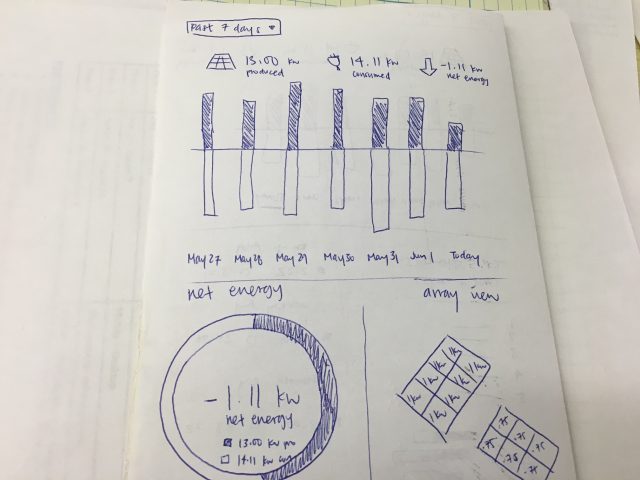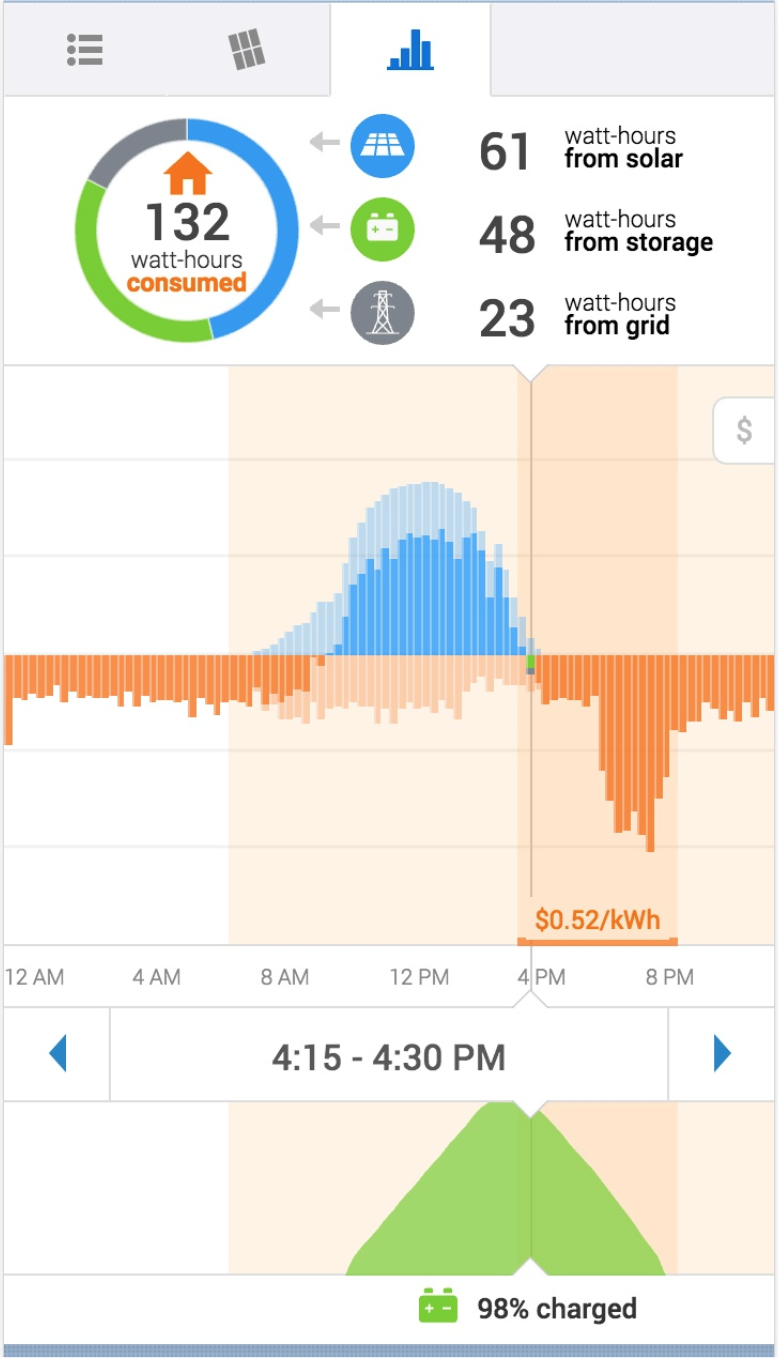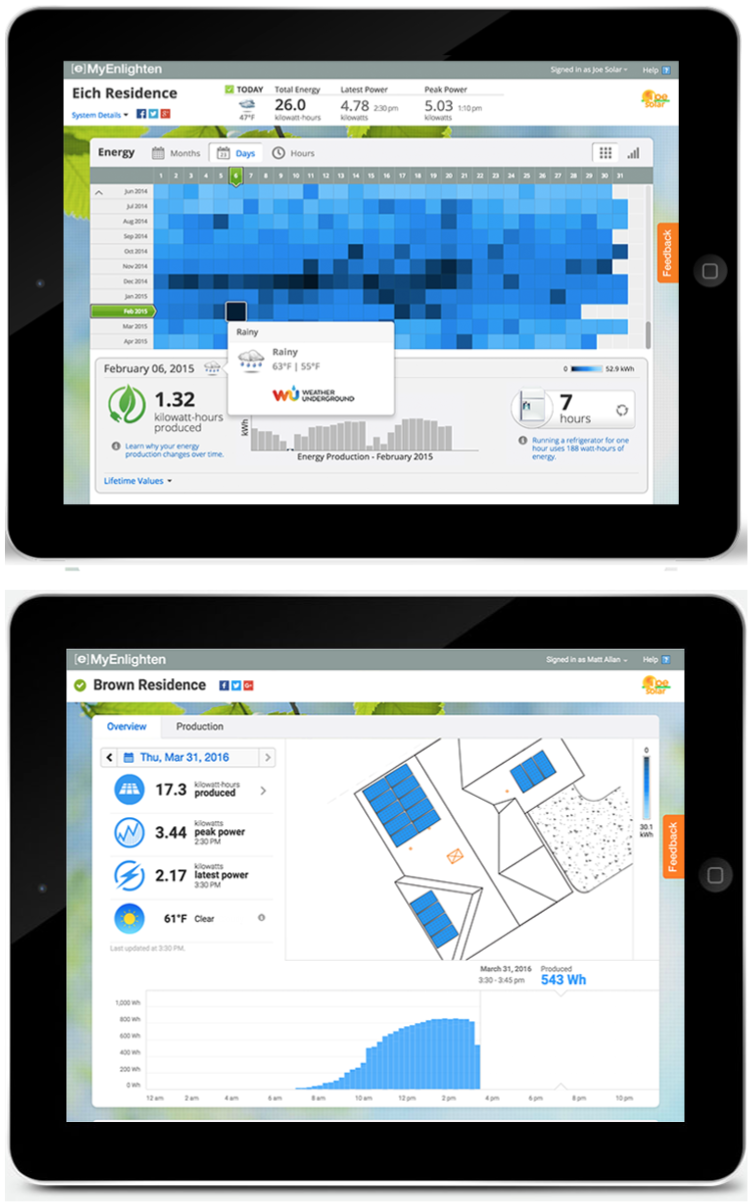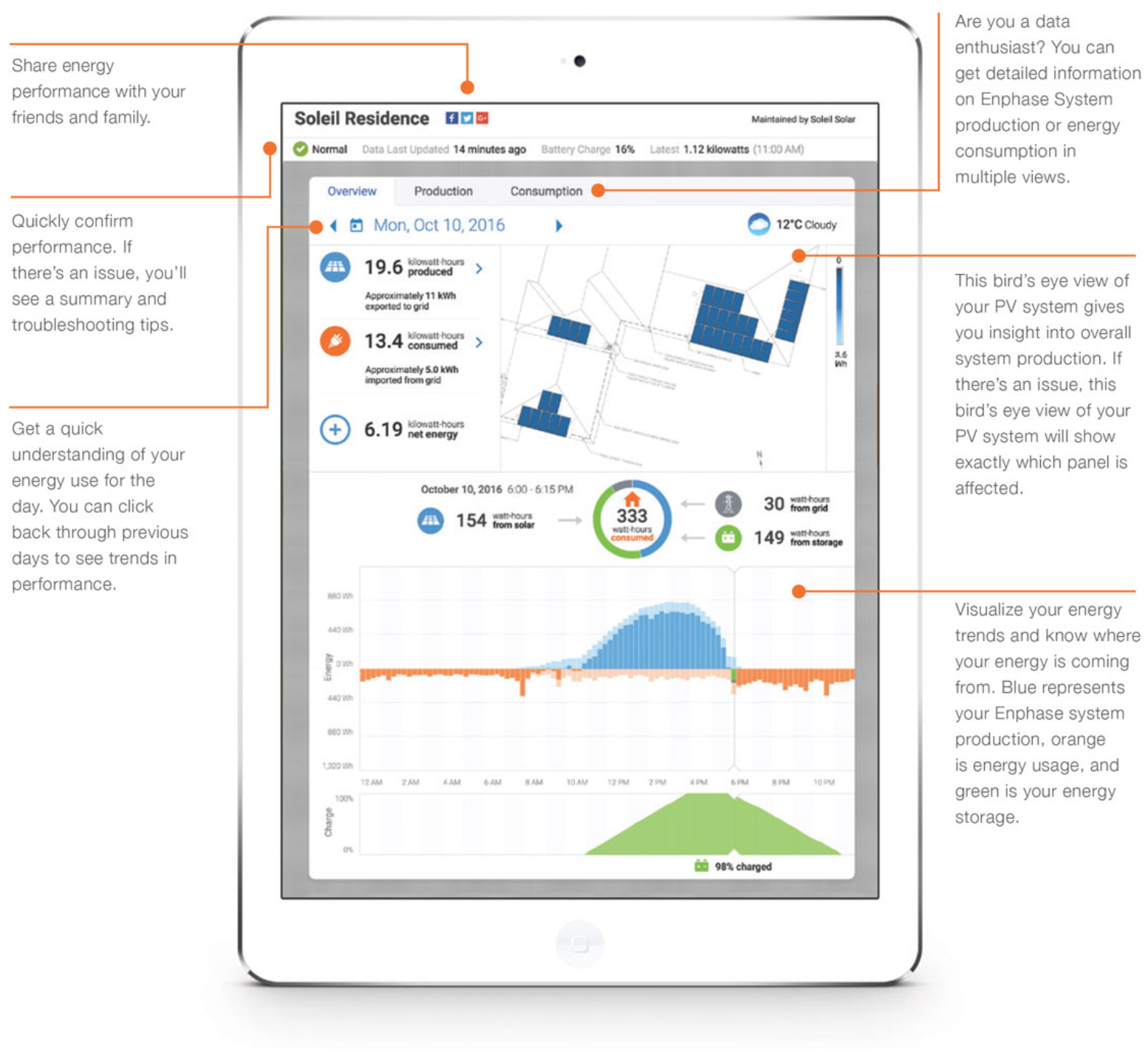Design Leadership: Integrating Energy Storage
In 2014 Enphase Energy announced a residential battery that would integrate with its solar offering. While this represented a relatively small market, it required a complete re-thinking of the existing monitoring application.
First Concepts
The first public concepts presented for a battery view of energy were based on the early insight that Enlighten must shift from a solar generation-centered view to a home-centered view.
The R&D and UX teams collaborated to create a tradeshow prototype that used a directly connected battery with simulated loads to show charging/discharging in real time. The buzz was tremendous!
My Role
- Leading Product Management, UX and Design team in converting an R&D concept to shippable product
- Hands-on work for initial software concept development and competitive research
- Directing user research approach, especially focus groups and user surveys
- Managing the iterative realization of the MyEnlighten application in alignment with the overall AC Battery product line launch
Key Questions
Adding storage moves users from passive observation of their systems to active monitoring and tuning. As we moved past initial concepting the following key questions emerged:
- How do we manage customer expectations of real-time interaction?
- How can we help users understand flow of energy within the home?
- How can we seamlessly integrate a home-based view into the existing solar-oriented application?
1. Managing customer expectations versus latency
Based on experiences with other products, customers expected real-time energy visibility, but the network implementation introduced latency of up to 30 minutes.
To mitigate this, we needed to both make users aware of the latency and make it irrelevant. Data recency was incorporated on the status banner and I directed the team to focus the interaction design on creating a highly dynamic view of historical data. Our goal became to present historical data in a way that made it more useful and accessible than an instantaneous reading.
2. Helping users understand energy flow
In the initial research, I identified EV drivers as a group of consumers already interacting with storage in a related context. Interviews with them highlighted the value of animation in communicating the dynamic nature of energy flow. Over multiple iterations, the design team narrowed in on an animated “doughnut” chart that interacted with more complex energy and state of charge graphs.
3. Integrating with existing design
Storage would only apply to new installations; all changes needed to be implemented without impacting existing users had solar only installations. To minimize disruption we introduced an “overview” tab in the existing interface. This tab was the initial landing screen for battery owners. Solar users continued to land on the generation tab, for them, the new overview was discoverable as a new feature. The UI team used the opportunity to move to a flat design, eliminating drop shadows and gradients throughout the application, subtly updating the app for all users.
Launch
We took advantage of infrastructure designed for incremental launch to collect feedback from Beta customers.
- Parameter based feature enablement using release “sliders”
- Feature-specific analytics
- Built in qualitative feedback
User reception was extremely positive. The product and UX teams met daily during beta to review user feedback and usage patterns and make adjustments:
- Error messages in the status bar were continuously tuned.
- There was no disruption to existing solar users.
- Delayed data continued to be a challenge. A “placebo” data refresh button was added in response to user feedback.
The Beta continued through end of 2016. By 2018, Enphase Energy Storage installations reached over 12,500 homes.





